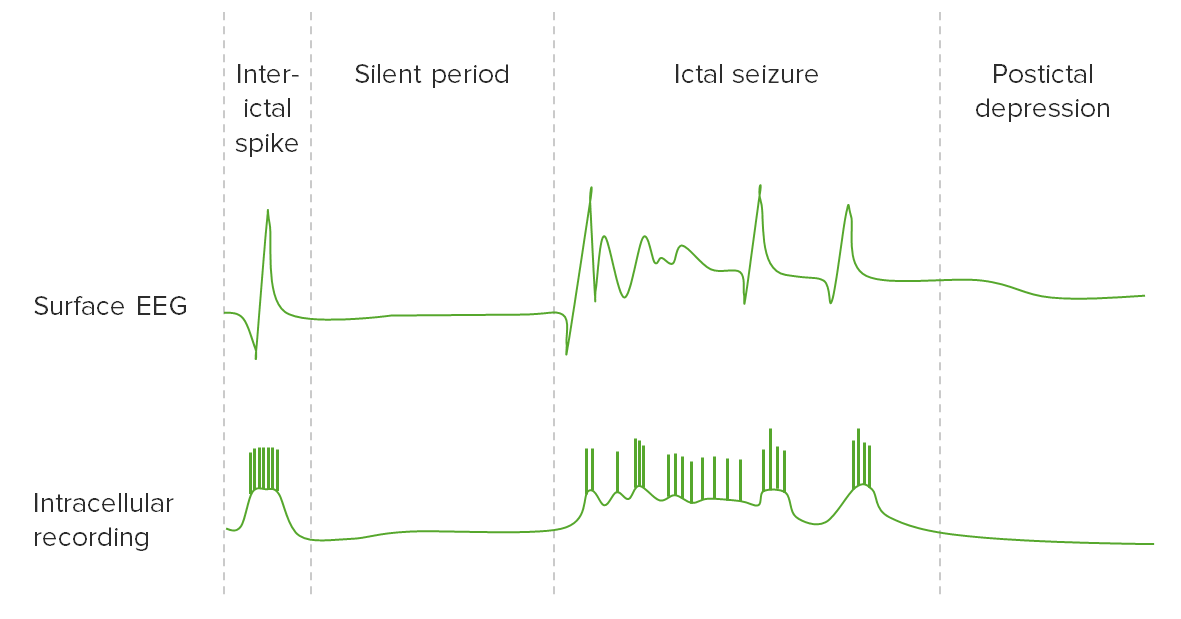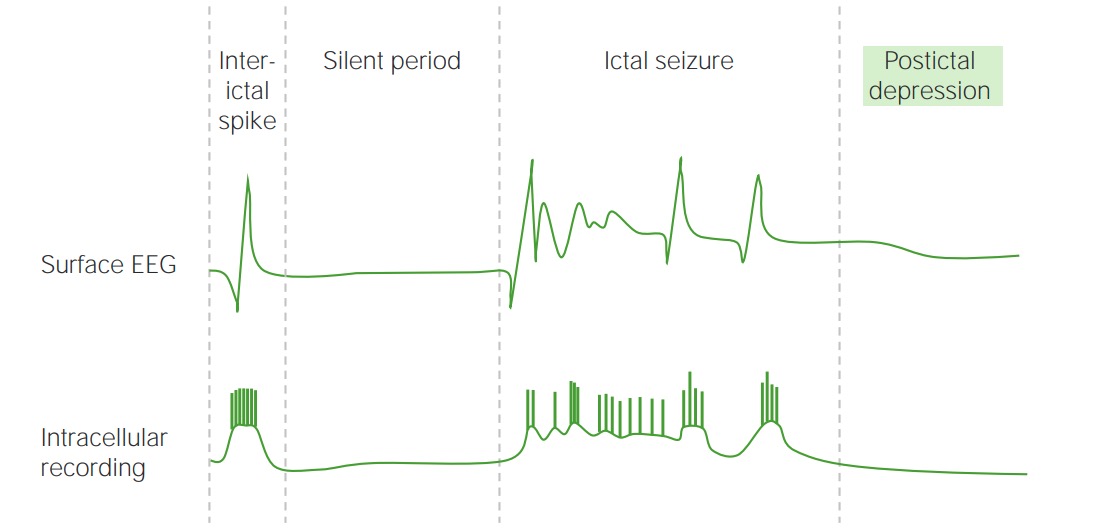Playlist
Show Playlist
Hide Playlist
Seizure: Classification and Focal vs. Generalized Onset
-
Slides Seizures Epilepsy New Onset Seizure.pdf
-
Download Lecture Overview
00:01 So if you've determined it's a seizure. 00:03 Now what? Step 1 is to classify the seizure. 00:07 What kind of seizure is it? And over the years, there's been many classification systems that are used to categorize seizure. 00:15 The oldest of these considered 3 seizure types, focal, grand mal and petit mal. 00:21 And you'll still see these words used to describe seizures. 00:26 Our prior categorization system classified seizures as simple partial, complex partial or secondarily generalized tonic-clonic seizures. 00:36 These are all the focal onset seizures or primary generalized seizures. 00:42 And alternative classification has been localization-related epilepsy, or generalized epilepsy. 00:50 Our current classification system considers focal onset and generalized onset seizures. 00:55 The focal onset seizures can be with retained awareness and being motor or non-motor or with altered awareness and be motor or non-motor. 01:04 And then the third category is focal onset seizures that progressed to tonic-clonic seizures. 01:10 The generalized onset can be sub classified as motor or non-motor. 01:15 What you see in this table is regardless of the classification system, there's 2 basic types of seizures. 01:21 Those that start in a single focus, those are the focal, the grand mal, the simple complex partial, the localization-related epilepsy, and the focal onset seizures. 01:31 They start out on the surface of the brain and can progress. 01:35 And those are different from the generalized seizures, which again have been described with many words, petit mal, primary generalized, generalized or generalized onset, all indicating the same thing. 01:48 So when we think about the current classification system, the International League Against Epilepsy, which is the largest governing body for epilepsy and seizures, considers the following algorithm to evaluate a patient seizure and classify it. 02:02 Seizures can be focal and onset. 02:04 Those are seizures that start in and affect one part of the brain. 02:08 And those focal onset seizures can either be with retained awareness, or with an impaired awareness. 02:15 Focal onset seizures can be subclassified as being motor and onset, and we see a number of motor symptoms automatisms, atonic, clonic, epileptic spasms, hyperkinetic, myoclonic or tonic seizures. 02:29 Or non-motor in onset with non-motor automatisms, behavior arrest, cognitive changes, emotional or sensory findings. 02:38 And all focal onset seizures can secondarily generalize to a secondary generalized tonic-clonic seizure. 02:45 And this category was previously considered secondary generalized seizures. 02:52 Seizures can also be generalized and onset. 02:54 These are seizures that start from a deep focus in the brain and manifest throughout the cortex at the same time. 03:01 Again, these can be motor and onset or non-motor and onset. 03:06 And then there's a new category of unknown seizure onset used to describe seizures if doctors are unaware of where in the brain the seizure starts. 03:15 These unknown onset seizures can also have motor or non-motor subclassification. 03:20 And this group is important. 03:22 When we're treating patients with epilepsy, patients who are refractory to medications, we would consider a seizure surgery, which is good for localization-related epilepsy or a focal onset seizure, but we wouldn't consider that for an unknown onset seizure. 03:37 And then there's the last category of unclassified seizures where there's not enough information available about the person seizure, or an unusual nature of seizure. 03:47 And this is really used by advanced medical professionals if they are confident that they've truly ruled out a focal onset, generalized onset or unknown onset epilepsy. 03:58 And when I'm evaluating a patient, I really like the older classification. 04:02 It helps me to understand how to categorize this patient seizure and approach their management. 04:08 So I like to consider seizures as being focal and onset and either being simple partial, complex partial or secondarily generalized. 04:16 The simple partial seizures are those with retained awareness. 04:20 Those are the auras that patients experience. 04:22 Complex partial seizures involved alteration of awareness. 04:25 Patients may lose consciousness or they may just be altered, not able to speak or interact with the world around them. 04:33 And then secondary generalized tonic-clonic seizures involve convulsions. 04:37 These start from a focus, we can see it on a scalp EEG and hear it when we're evaluating patients clinically through their aura or ictal onset. 04:46 Those are different from the generalized onset seizures, and there's 6 generalized seizure types. 04:51 Absence those are brief small behavioral myoclonic, atonic, tonic, clonic and generalized tonic-clonic seizures
About the Lecture
The lecture Seizure: Classification and Focal vs. Generalized Onset by Roy Strowd, MD is from the course Seizures and Epilepsy.
Included Quiz Questions
Which of the following is a generalized onset seizure? Select all that apply
- Absence
- Secondary generalized
- Complex
- Myoclonic
- Atonic
Which seizure can be considered a focal onset seizure?
- Secondary generalized tonic-clonic seizures
- Primary generalized seizures
- Grand mal seizures
- Absence seizures
- Myoclonic seizures
Customer reviews
5,0 of 5 stars
| 5 Stars |
|
5 |
| 4 Stars |
|
0 |
| 3 Stars |
|
0 |
| 2 Stars |
|
0 |
| 1 Star |
|
0 |





